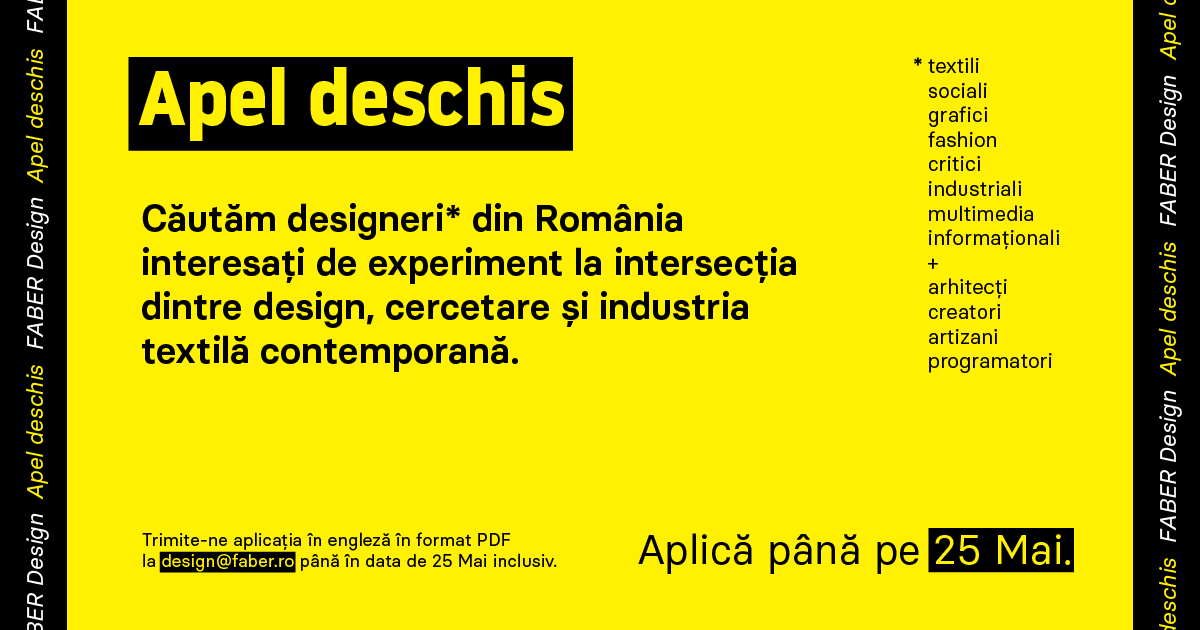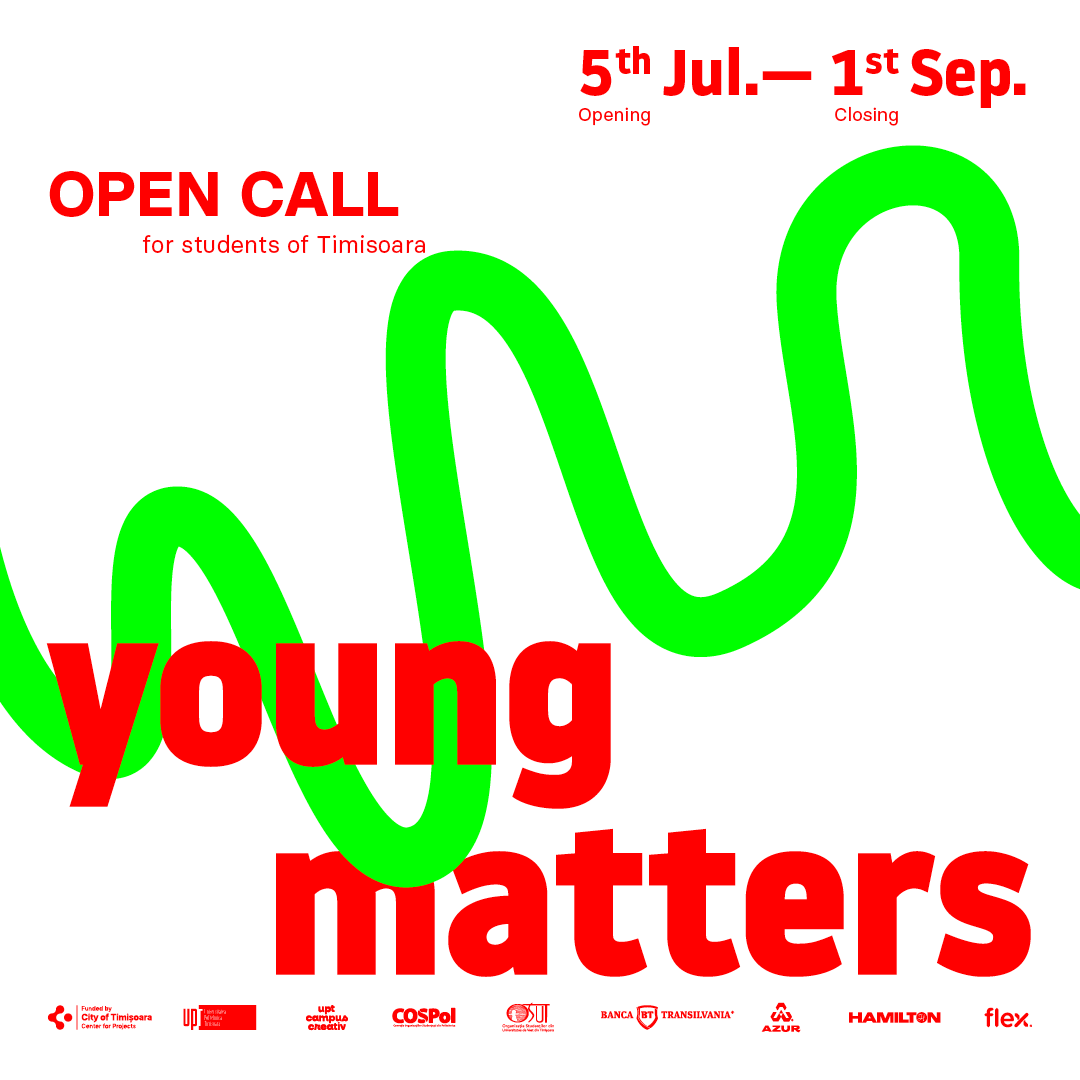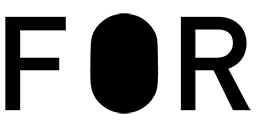FABER DESIGN PROGRAM 2024
In 2023, FABER developed, in partnership with Politehnica University Timisoara, Bright Cityscapes – a multidisciplinary project within the Timișoara 2023 European Capital of Culture program, one interested in observing, responding and acting on the contemporary problems within both Timișoara and the discipline of design. By zooming into the specific context of Timisoara, Bright Cityscapes explored design’s intricate relationship with contemporary challenges and technological advancements through the perspectives of international thinkers, designers, sociologists, academia, institutions and companies, in a series of exhibitions, conferences, workshops and other events.
The results were presented in the culminating exhibition of Bright Cityscapes, ”Turn Signals — Design is not a Dashboard” that looked closely at the automotive industry, one of the economic engines of Timisoara. The program fostered connections between different approaches, places, and people, serving to bridge gaps and generate a deeper appreciation of the interconnectedness within Timișoara and design. Different media, storytelling formats, and design languages were used to explore both the hidden narratives and untapped resources within Timișoara, and how design can intersect with and question topics related to industry and its multifaceted contemporary challenges.
We are now excited to communicate that in 2024 FABER continues the design program and opens up a call to designers to join in a new exploration and production of design based projects. After the automotive industry which is the most commonly visible industry of Timisoara area, this year the investigation is about an industry whose story is not only of automation, outsourcing and networks but also of resilience and invisibilities: the textile industry.
Woven Secrets
The next exhibition within FABER’s Design Program, “Woven Secrets”, looks at the intersection between the textile industry and the role that the textile industry in Timisoara had, has and could have. As part of the city’s industrial heritage, the textile industry morphed within or is connected to other industrial sectors of the region such as automotive, agriculture, architecture, chemical, construction, medical or fashion industries at large. When present, the textile industry is well connected to larger supply chains which as much as other industries in the area link Timisoara to large European and global markets. Its heritage is visible not only in the built infrastructure of the city but also within company archives, traded artefacts, workers’ knowledge, environmental challenges, and businesses still operating in town or in geographical proximity.
Commonly recognised as the material that is most in contact with our skin, we want to observe textiles as an interconnection of industries, as testimonies of technological processes, as artefacts and waste. We are interested in textiles as a result of sophisticated weaving techniques, resource transformations, machine intelligence, engineering processes, human knowledge, collective memory and environmental challenges. As an indicator of century-long interdependence between different industries, the textile industry is a relevant ground in which to reflect on engineering, global supply chains and the relation between industrial design and our industrial, social and natural environments.
The call
With this call we invite young and professional designers with different interests, skills and visions on contemporary design to apply individually or collectively. We invite makers, textile designers, information designers, coders, social designers, architects, multimedia designers, industrial designers, critical designers, graphic designers, bio designers, fashion designers or other areas of design practices wanting to engage with textile industries.
We invite the applicants to apply with a thematic interest and approach proposal related to the theme of the textile industry. The open call provides a framework, a fee and platform through which to develop new design work. It is an opportunity for designers to apply their skills and vision into a research based process leading to an exhibition presentation and expand their work in a real context engaging with a series of collaborations starting from the one with the curator and the FABER exhibition/research team.
Applicants will be notified via email within a week the application deadline, with the selected applicants being invited for an interview. Following the interviews round, a final four applicants will be selected. The chosen applicants will spend five months (May—September) developing their thematic interest and approach proposal into a research-based design project related to the textile industry in the context of the design field. The selection will be made by Martina Muzi, the curator of the FABER design program.
The research outcomes and final works will be presented to the public as part of the “Woven Secrets” exhibition at FABER in September 2024.
Please send the application before 25th May at design@faber.ro
Thematic interest and approach proposal guidelines
The curator will select thematic interest and approach proposals that demonstrate a critical vision and understanding of the textile industry as a material, economic, environmental, political, and aesthetic component deeply entangled with the global networks of design, industry, infrastructure and consumption. Departing, crossing or ending in Timisoara, the thematic interest and approach proposal should be connected to textile manufacturing or the textile industry as a whole.
The aim of the “Woven Secrets” exhibition is to present a diverse research by designers into the world of textile industry in connection to Timisoara’s industrial ecosystem and its international networks. The thematic interest and approach proposals should be open to consider over the duration of the project agents, places, people, practices, techniques and design media which can potentially engage them and their practice with textile related design questions.
Proposals should be:
- Based on a specific theme of interest within the textile industry, focused on a real-world case and highlighting questions, passion or urgencies of investigation;
- Formulated around a clear design approach for research and experimentation, considering a multidisciplinary methodology of research and a variety of design approaches, tools, techniques, media and materials;
- Inspired by a variety of agents and systems including factories, workers, machineries, artefacts, technologies, infrastructures, markets, centres or places relevant for the textile industry.;
- Curious, inventive and open to experiment at the intersection of design, contemporary industry and research;
- A close or far connection to Timisoara is welcome but not mandatory in the phase of application. The applicant can develop the connection to Timisoara during the development phase of the project.
Application guidelines
Proposals should be submitted in English as a single, 10 page PDF no larger than 10MB.
Please name the PDF with name_surname.pdf: Submit by sending email to design@faber.ro using as email subject: Woven Secrets application name_surname.
Page 1: Name of applicant(s), location, bio (max 200 words), link to website or online portfolio, and motivation letter explaining what is your current work, why the participation is relevant for you, how it connects with your current practices (max 400 words).
Page 2–3: Thematic of investigation with a specific design interest related to the textile industry (max 400 words) and max of 5 images. The thematic interest should be supported by news, artefacts, techniques, technologies, places, people, practices, phenomena, productions, trades, media or others which grounds the interest within the reality of the textile industry. Please include relevant sources, citations, maps and documentation when needed.
Page 4–5: Approach to research and design experimentation (max 400 words) indicating first the relevant research tools or methods through which the interest might be explored and secondly the design approach including tools, techniques, media and materials relevant in your practice and this project. Also indicate the time availability for developing this project thinking of travelling and field research, exhibition set up between May to September (project phase) and September to November (exhibition opening phase).
Page 6–9: Selected works with images, captions and dates which help to discover previous work in relation to your research and design approach. Please add links to external websites if needed.
Page 10: Personal or professional CV on 1 page.






